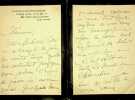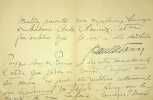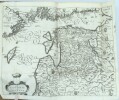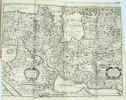4156 books for « adam »Edit
-
Type
Art print (1)
Artists book (2)
Autograph (12)
Book (4088)
Drawings (1)
Engraving (15)
Magazine (4)
Manuscript (4)
Maps (2)
Music sheets (25)
New book (2)
Photographs (1)
-
Latest
Last 24h (3)
Last 3 days (6)
Last month (161)
Last week (9)
-
Language
Dutch (1)
English (8)
French (4141)
German (2)
Russian (5)
-
Century
16th (1)
17th (26)
18th (53)
19th (455)
20th (1582)
21st (390)
-
Countries
Belgium (162)
Canada (20)
China (1)
Côte d'Ivoire (4)
Denmark (92)
France (3544)
Germany (8)
Greece (3)
Italy (5)
Switzerland (310)
United Kingdom (3)
United States of America (5)
-
Syndicate
ALAC (18)
CLAM (5)
CLAQ (5)
CNE (2)
ILAB (2140)
NVVA (60)
SLACES (60)
SLAM (1929)
SNCAO (55)
Topics
- Adam (3309)
- Adam antoine (39)
- Adam jean pierre (17)
- Adam juliette (38)
- Adam michel (10)
- Africa (11)
- Age (9)
- Alsace (31)
- Archaeology (17)
- Architecture (13)
- Autographs (77)
- Biography (21)
- Caricature (9)
- Children’s books (37)
- Christmas (12)
- Cinema (10)
- Comic strip (34)
- Commune (13)
- Customs (9)
- Dedication (10)
- Descartes rené (9)
- Detective novels (144)
- Dictionaries (13)
- Drawings (16)
- Early printed books (10)
- Economics (12)
- Economics (40)
- Education (19)
- Education - morals (13)
- English (11)
- Engraving (books about) (17)
- Ethic (9)
- Fantastic (17)
- Fine arts (13)
- First edition (91)
- French literature (11)
- Geography (10)
- Germanic languages (19)
- Germany (16)
- Guide books (10)
- Hainaut (22)
- Helvética (19)
- History (125)
- Illustrated books (22)
- Industrial arts & crafts - fine arts (17)
- Italy (10)
- Journalism (29)
- Law (17)
- Literature (579)
- Lorrain (14)
- Malacology (9)
- Manuscripts (27)
- Maps (9)
- Mathematics (74)
- Medicine (15)
- Mickiewicz adam (13)
- Middle ages (12)
- Music (22)
- Newspapers press (16)
- Opera (10)
- Opera ballet (12)
- Painting (10)
- Paris (52)
- Philosophy (52)
- Photography (34)
- Poetry (31)
- Poland (17)
- Police (20)
- Policy (22)
- Portraits (13)
- Psychology (13)
- Raphael (16)
- Regionalism (12)
- Reliure (20)
- Review (25)
- Reviews (18)
- Rops félicien (12)
- Russia (13)
- Scandinavian literature (52)
- Science fiction (16)
- Sciences (11)
- Scores (139)
- Smith adam (21)
- Songs (31)
- Spying (40)
- Stendhal (11)
- Switzerland (14)
- Symbolism (13)
- Tales (38)
- Theatre (47)
- Trouvère (9)
- Various (20)
- War (53)
- Women (the) (26)
- Woods & woods’ price lists (9)
- Xixth century (12)
Discursus curiosi et fructuosi ad praecipuas totius litteraturae humanae scientias illustrandas accomodati : *opus tam lectu iucundum quam fructu foecundium, in quo de macrocosmo & microcosmo sive de magno et parvo mundo sub schemate universalis litteraturae non minus accurate quam succinte disseritur
Salisburgo Impensis Joannis Baptistae Mayr, typographi 1690 In-16°, pp. (16), 916, (36), frontespizio in rosso e nero, legatura coeva in piena pelle, dorso a quattro nervi, titolo su tassello. Bruniture lievi e leggre gore sparse,
Untersuchung der Natur und Ursachen von Nationalreichthümern, Aus dem Englischen. 2 Bände. - [THE SEMINAL FIRST TRANSLATION OF 'WEALTH OF NATIONS']
Leipzig, Weidmann, 1776-78. 8vo. Bound in two nice uniform contemporary half calf bindings with five raised bands and gilt lettering to spine. Ex-libris pasted on to pasted down front free end-papers and a small embossed stamp to front free end paper on volume 1 (""Buchhändler u. Antiquar Carl Helf""). Stamp to p. 1 of both volumes. Spines with light soiling and capital on volume 1 lacking a small part of the leather. A few light brown spots throught. A fine set. VIII, 632 pp"" XII, 740 pp.
First German edition, also being the very first overall translation, of Adam Smith's ground-breaking main work, the ""Inquiry into the Nature and Causes of the Wealth of Nations"". This seminal first translation of the work was undertaken by J.F. Schiller, who finished the first part of the translation in time for it to appear as soon as 1776, the same year as the original English edition. The second part appeared in 1778, the same year as the exceedingly scarce first French translation. This first German translation has been of the utmost importance to the spreading of Smith's ideas throughout Europe, and, after the true first, this must count as the most important edition of the work.""The influence of the Wealth of Nations [...] in Germany [...] was so great that 'the whole of political economy might be divided into two parts - before and since Adam Smith"" the first part being a prelude, and the second a sequel."" (Backhouse, Roger E., The Methodology of Economics: Nineteenth-Century British Contributions, Routledge, 1997.)""The first review of the translation, which appeared in the Göttingische gelehrte Anzeigen for March 10, 1777, by J. G. H. Feder, professor of Philosophy at the University of Göttingen, was very favorable. In the words of the reviewer: ""It is a classic"" very estimable both for its thorough, not too limited, often far-sighted political philosophy, and for the numerous, frequently discursive historical notes,"" but the exposition suffers from too much repetition."" (Lai, Cheng-chung. Adam Smith Across Nations: Translations and Receptions of The Wealth of Nations, Clarendon Press, UK, 2000).Until 1797, [...], the work of Adam Smith received scant attention in Germany. While Frederick II was living, Cameralism held undisputed sway in Prussia, and the economic change which began with the outbreak of the French Revolution had still not gained sufficient momentum to awake the economic theorists from their dogmatic slumber."" (Lai, Cheng-chung. Adam Smith Across Nations: Translations and Receptions of The Wealth of Nations, Clarendon Press, UK, 2000).Various German economist read the german translations and was inspired by it.""Christian Garve, [...], must be considered as among the important contributors to the spread of Smith's views. Himself a popularizer of philosophical doctrines, he was early attracted by the Scotch writers and became one of their foremost exponents in Germany."" In 1791 Garve began a second translation of the Smith's work and in the introduction to the the translation he wrote: ""It (Smith's work) attracted me as only few books have in the course of my studies through the number of new views which it gave me not only concerning the actual abject of his investigations, but concerning all related material from the philosophy of civil and social life"". Georg Sartorius, August Ferdinand Lueder and, perhaps the most important economist of the period, Christian Jacob Kraus, were all important figures in the spread of Smith's thought. ""The most significant of Kraus' works and that also which shows his conception of economic science most clearly is the five-volume work entitled State Economy. The first four volumes of this work are little more than a free paraphrase of the Wealth of Nations"". Kraus was: ""to a large extent responsible for the economic changes which took place in Prussia after 1807, in so far as they can be ascribed to Smithan influence."" (Lai, Cheng-chung. Adam Smith Across Nations: Translations and Receptions of The Wealth of Nations, Clarendon Press, UK, 2000).Kraus wrote of the present volume: ""[T]he world has seen no more important book than that of Adam Smith.... [C]ertainly since the times of the New Testament no writing has had more beneficial results than this will have.... [Smith's doctrines form] the only true, great, beautiful, just and beneficial system."" (Fleischacker, Samuel , A Third Concept of Liberty, Princeton University Press, 1999.)_____________Hailed as the ""first and greatest classic of modern thought"" (PMM 221), Adam Smith's tremendously influential main work has had a profound impact on thought and politics, and is considered the main foundation of the era of liberal free trade that dominated the nineteenth century. Adam Smith (1723-1790) is considered the founder of Political Economy in Britain, mainly due to his groundbreaking work, the ""Wealth of Nations"" from 1776. The work took him 12 years to write and was probably in contemplation 12 years before that. It was originally published in two volumes in 4to, and was published later the same year in Dublin in three volumes in 8vo. The book sold well, and the first edition, the number of which is unknown, sold out within six months, which came as a surprise to the publisher, and probably also to Smith himself, partly because the work ""requires much thought and reflection (qualities that do not abound among modern readers) to peruse to any purpose."" (Letter from David Hume, In: Rae, Life of Adam Smith, 1895, p. 286), partly because it was hardly reviewed or noticed by magazines or annuals. In spite of this, it did evoke immense interest in the learned and the political world, and Buckle's words that the work is ""in its ultimate results probably the most important book that has ever been written"", and that it has ""done more towards the happiness of man than has been effected by the united abilities of all the statesmen and legislators of whom history has preserved an authentic account"" (History of Civilisation, 1869, I:214) well describes the opinion of a great part of important thinkers then as well as now. Kress S. 2567Goldsmith 11394Menger 521Not in Einaudi
Untersuchung der Natur und Ursachen von Nationalreichthümern, Aus dem Englischen. 2 Bände. - [THE SEMINAL FIRST TRANSLATION OF 'WEALTH OF NATIONS']
Leipzig, Weidmann, 1776-78. 8vo. Bound in two nice uniform contemporary half calf bindings with five raised bands, black title-label and gilt lettering to spine. Small paper-label to upper compartment (Catalogue-number from an estate-library). Light wear to extremities, otherwise a very nice set. VIII, 632 pp" XII, 740 pp.
First German edition, also being the very first overall translation, of Adam Smith's ground-breaking main work, the ""Inquiry into the Nature and Causes of the Wealth of Nations"". This seminal first translation of the work was undertaken by J.F. Schiller, who finished the first part of the translation in time for it to appear as soon as 1776, the same year as the original English edition. The second part appeared in 1778, the same year as the exceedingly scarce first French translation. This first German translation has been of the utmost importance to the spreading of Smith's ideas throughout Europe, and, after the true first, this must count as the most important edition of the work.""The influence of the Wealth of Nations [...] in Germany [...] was so great that 'the whole of political economy might be divided into two parts - before and since Adam Smith"" the first part being a prelude, and the second a sequel."" (Backhouse, Roger E., The Methodology of Economics: Nineteenth-Century British Contributions, Routledge, 1997.)""The first review of the translation, which appeared in the Göttingische gelehrte Anzeigen for March 10, 1777, by J. G. H. Feder, professor of Philosophy at the University of Göttingen, was very favorable. In the words of the reviewer: ""It is a classic"" very estimable both for its thorough, not too limited, often far-sighted political philosophy, and for the numerous, frequently discursive historical notes,"" but the exposition suffers from too much repetition."" (Lai, Cheng-chung. Adam Smith Across Nations: Translations and Receptions of The Wealth of Nations, Clarendon Press, UK, 2000).Until 1797, [...], the work of Adam Smith received scant attention in Germany. While Frederick II was living, Cameralism held undisputed sway in Prussia, and the economic change which began with the outbreak of the French Revolution had still not gained sufficient momentum to awake the economic theorists from their dogmatic slumber."" (Lai, Cheng-chung. Adam Smith Across Nations: Translations and Receptions of The Wealth of Nations, Clarendon Press, UK, 2000).Various German economist read the german translations and was inspired by it.""Christian Garve, [...], must be considered as among the important contributors to the spread of Smith's views. Himself a popularizer of philosophical doctrines, he was early attracted by the Scotch writers and became one of their foremost exponents in Germany."" In 1791 Garve began a second translation of the Smith's work and in the introduction to the the translation he wrote: ""It (Smith's work) attracted me as only few books have in the course of my studies through the number of new views which it gave me not only concerning the actual abject of his investigations, but concerning all related material from the philosophy of civil and social life"". Georg Sartorius, August Ferdinand Lueder and, perhaps the most important economist of the period, Christian Jacob Kraus, were all important figures in the spread of Smith's thought. ""The most significant of Kraus' works and that also which shows his conception of economic science most clearly is the five-volume work entitled State Economy. The first four volumes of this work are little more than a free paraphrase of the Wealth of Nations"". Kraus was: ""to a large extent responsible for the economic changes which took place in Prussia after 1807, in so far as they can be ascribed to Smithan influence."" (Lai, Cheng-chung. Adam Smith Across Nations: Translations and Receptions of The Wealth of Nations, Clarendon Press, UK, 2000).Kraus wrote of the present volume: ""[T]he world has seen no more important book than that of Adam Smith.... [C]ertainly since the times of the New Testament no writing has had more beneficial results than this will have.... [Smith's doctrines form] the only true, great, beautiful, just and beneficial system."" (Fleischacker, Samuel , A Third Concept of Liberty, Princeton University Press, 1999.)_____________Hailed as the ""first and greatest classic of modern thought"" (PMM 221), Adam Smith's tremendously influential main work has had a profound impact on thought and politics, and is considered the main foundation of the era of liberal free trade that dominated the nineteenth century. Adam Smith (1723-1790) is considered the founder of Political Economy in Britain, mainly due to his groundbreaking work, the ""Wealth of Nations"" from 1776. The work took him 12 years to write and was probably in contemplation 12 years before that. It was originally published in two volumes in 4to, and was published later the same year in Dublin in three volumes in 8vo. The book sold well, and the first edition, the number of which is unknown, sold out within six months, which came as a surprise to the publisher, and probably also to Smith himself, partly because the work ""requires much thought and reflection (qualities that do not abound among modern readers) to peruse to any purpose."" (Letter from David Hume, In: Rae, Life of Adam Smith, 1895, p. 286), partly because it was hardly reviewed or noticed by magazines or annuals. In spite of this, it did evoke immense interest in the learned and the political world, and Buckle's words that the work is ""in its ultimate results probably the most important book that has ever been written"", and that it has ""done more towards the happiness of man than has been effected by the united abilities of all the statesmen and legislators of whom history has preserved an authentic account"" (History of Civilisation, 1869, I:214) well describes the opinion of a great part of important thinkers then as well as now. Kress S. 2567Goldsmith 11394Menger 521Not in Einaudi
Undersøgelse om National-Velstands Natur og Aarsag. Af det Engelske oversat og med nogle Anmærkninger oplyst af Dræbye. 2 Deele. [Anden Deel:] Hertil er føiet Gourvenør Pownals Brev til Forfatteren i hvilket nogle af de i dette Værk fremsatte Læresætn... - [FIRST DANISH EDITION OF ""THE WEALTH OF NATIONS""]
Kiøbenhavn [Copenhagen], 1779-80. 8vo. Two very nice contemporary brown half calf bindings with raised bands, gilt ornamentations and gilt leather title- and tome-labels. Volume two with a bit of wear to upper capital. Corners slightly bumped. Pencil annotations to verso of title-page in volume one" title-page in volume two mounted to cover up a small hole caused by the removal of an old owner's name. Internally very clean and bright. All in all a very nice, clean, fresh, and tight copy. Engraved (by Weise, 1784) armorial book plate to inside of front boards (Gregorius Christianus Comes ab Haxthausen). (12), 575" (8), 775, (3, - errata) pp.
The extremely scarce first Danish edition of Adam Smith's seminal main work, ""the first and greatest classic of modern economic thought"" (PMM 221), the main foundational work of the era of liberal free trade. This publication constitutes the first Danish work worth mentioning in the history of economic thought - in spite of the great interest in political economy that dominated Danish political thought in the last quarter of the 18th century. The value of Smith's work was not immediately recognized in Denmark at the time of its appearance and a quarter of a century had to go by for its importance to be acknowledged and for Danish political economy to adapt the revolutionizing theories of Adam Smith. Few copies of the translation were published and sold, and the book is now a great scarcity. As opposed to for instance the German translation of the work, Smith concerned himself a great deal with this Danish translation. As is evident from preserved correspondence about it, he reacted passionately to it and was deeply concerned with the reaction to his work in Scandinavia (see ""Correspondence of Adam Smith"", Oxford University Press, 1977).- As an example, Smith writes in a letter to Andreas Holt on Oct. 26th, 1780: ""It gives me the greatest pleasure to hear that Mr. Dreby has done me the distinguished honour of translating my Book into the Danish language. I beg you will present to him my most sincere thanks and most respectful Compliments. I am much concerned that I cannot have the pleasure of reading it in his translation, as I am so unfortunate as not to understand the Danish language."" The translation was made by Frants Dræby (1740-1814), the son a whiskey distiller in Copenhagen, who mastered as a theologian and was then hired by the great Norwegian merchant James Collett as tutor to his son. There can be no doubt that Dræbye's relation to the Collett house had a great impact upon his interest in economics. In the middle of the 1770'ies, Dræbye accompanied Collett's son on travels throughout Europe, which took them to England in the year 1776, the same year that the ""Wealth of Nations"" was published for the first time. Through the Colletts, Dræbye was introduced to the mercantile environment in England and here became thoroughly acquainted with English economics and politics at the time. It is presumably here that he gets acquainted with Adam Smith's freshly published revolutionary work. When Dræbye returned to Denmark at the end of 1776, he was appointed chief of the Norwegian secretariat of the Board of Economics and Trade. He began the translation of the ""Wealth of Nations"" that he brought back with him from England immediately after his return.""WN [i.e. Wealth of Nations] was translated into Danish by Frants Dræbye and published in 1779 (three years after the first English edition). The translation was initiated by Andreas Holt and Peter Anker, who were acquainted with Smith. Dræbye was a Dane who lived mainly in Norway, reflecting the fact that Norway was much more British-oriented than Denmark proper (Denmark and Norway were united until 1814, when Sweden took Norway away from the Danes"" in 1905 Norway became an independent state). Norwegian merchants lived from exporting timber to Britain and tended on the whole to be adherents of a liberal economic policy, whereas the absolutist government in Copenhagen was more German-oriented and had economic views similar to those in contemporary Prussia."" (Cheng-chung Lai (edt.): ""Adam Smith Across Nations"", p. (37)). The last quarter of the eighteenth century in Denmark was dominated by a lively discussion of monetary policy and the institutional framework best suited to realize that policy. There was a vital interest in questions of economic concern, and contemporary Danish sources refer to the period as ""this economic age"" and state things such as ""never was the world more economically minded"" (both from ""Denmark and Norway's Economic Magazine""). During this period, Smith's revolutionary ideas did not play a major role, however, and only at the beginning of the 19th century did Danish politicians and economists come to realize the meaning of Smith's views. ""Without exaggeration it can essentially be said that a quarter of a century was to pass from the time of the publication of the book in Denmark before Danish political economy fully made Adam Smith's theories and points of view its own. It took so long a time because the economic conditions as a whole in the years from 1780-1800 did not make desirable or necessary the changing of their concepts. That glorious commercial period had to pass before it was understood that we had altogether too little help in our own natural resources and that a different course was, therefore, necessary. Only when one had come so far could the new thinking find a nourishing soil so that it could develop strength with which to push aside the old ideas.""(Hans Degen: ""On the Danish Translation of Adam Smith and Contemporary Opinion Concerning It."" Translated by Henrietta M. Larson. In: Adam Smith Across Nations, p. 51). This first Danish translation is one of the very earliest translations of ""Wealth of Nations"""" it is only preceded by the German (1776-78) and the extremely scarce French (1778-79). As a comparison, the Italian translation does not appear until 1790-91, the Spanish 1792, the Swedish 1800-1804, the Russian 1802, etc.Adam Smith Across Nations: A4 - nr. 1. ""All five books were translated"" appears to be a complete translation. The long letter from Governor Pownall to Adam Smith (25 Sept. 1776) is added as the Appendix (vol. 2, pp. 683 ff.).""(PMM 221 - first edition)
Undersøgelse om National-Velstands Natur og Aarsag. Af det Engelske oversat og med nogle Anmærkninger oplyst af Dræbye. 2 Deele. [Anden Deel:] Hertil er føiet Gourvenør Pownals Brev til Forfatteren i hvilket nogle af de i dette Værk fremsatte Læresætn... - [FIRST DANISH EDITION OF ""THE WEALTH OF NATIONS""]
Kiøbenhavn [Copenhagen], 1779-80. 8vo. Two nice contemporary half calf bindings with four raised bands and gilt leather title label to spines. Volume one lacking one cm of upper part of spine. Volume two with a small tear to lower part of spine. Both volumes with light brown spotting throughout, however, mainly affecting first and last five leaves of both volumes. A fine set. (12), 575"" (8), 775, (3, - errata) pp.
The extremely scarce first Danish edition of Adam Smith's seminal main work, ""the first and greatest classic of modern economic thought"" (PMM 221), the main foundational work of the era of liberal free trade. This publication constitutes the first Danish work worth mentioning in the history of economic thought - in spite of the great interest in political economy that dominated Danish political thought in the last quarter of the 18th century. The value of Smith's work was not immediately recognized in Denmark at the time of its appearance and a quarter of a century had to go by for its importance to be acknowledged and for Danish political economy to adapt the revolutionizing theories of Adam Smith. Few copies of the translation were published and sold, and the book is now a great scarcity. As opposed to for instance the German translation of the work, Smith concerned himself a great deal with this Danish translation. As is evident from preserved correspondence about it, he reacted passionately to it and was deeply concerned with the reaction to his work in Scandinavia (see ""Correspondence of Adam Smith"", Oxford University Press, 1977).- As an example, Smith writes in a letter to Andreas Holt on Oct. 26th, 1780: ""It gives me the greatest pleasure to hear that Mr. Dreby has done me the distinguished honour of translating my Book into the Danish language. I beg you will present to him my most sincere thanks and most respectful Compliments. I am much concerned that I cannot have the pleasure of reading it in his translation, as I am so unfortunate as not to understand the Danish language."" The translation was made by Frants Dræby (1740-1814), the son a whiskey distiller in Copenhagen, who mastered as a theologian and was then hired by the great Norwegian merchant James Collett as tutor to his son. There can be no doubt that Dræbye's relation to the Collett house had a great impact upon his interest in economics. In the middle of the 1770'ies, Dræbye accompanied Collett's son on travels throughout Europe, which took them to England in the year 1776, the same year that the ""Wealth of Nations"" was published for the first time. Through the Colletts, Dræbye was introduced to the mercantile environment in England and here became thoroughly acquainted with English economics and politics at the time. It is presumably here that he gets acquainted with Adam Smith's freshly published revolutionary work. When Dræbye returned to Denmark at the end of 1776, he was appointed chief of the Norwegian secretariat of the Board of Economics and Trade. He began the translation of the ""Wealth of Nations"" that he brought back with him from England immediately after his return.""WN [i.e. Wealth of Nations] was translated into Danish by Frants Dræbye and published in 1779 (three years after the first English edition). The translation was initiated by Andreas Holt and Peter Anker, who were acquainted with Smith. Dræbye was a Dane who lived mainly in Norway, reflecting the fact that Norway was much more British-oriented than Denmark proper (Denmark and Norway were united until 1814, when Sweden took Norway away from the Danes"" in 1905 Norway became an independent state). Norwegian merchants lived from exporting timber to Britain and tended on the whole to be adherents of a liberal economic policy, whereas the absolutist government in Copenhagen was more German-oriented and had economic views similar to those in contemporary Prussia."" (Cheng-chung Lai (edt.): ""Adam Smith Across Nations"", p. (37)). The last quarter of the eighteenth century in Denmark was dominated by a lively discussion of monetary policy and the institutional framework best suited to realize that policy. There was a vital interest in questions of economic concern, and contemporary Danish sources refer to the period as ""this economic age"" and state things such as ""never was the world more economically minded"" (both from ""Denmark and Norway's Economic Magazine""). During this period, Smith's revolutionary ideas did not play a major role, however, and only at the beginning of the 19th century did Danish politicians and economists come to realize the meaning of Smith's views. ""Without exaggeration it can essentially be said that a quarter of a century was to pass from the time of the publication of the book in Denmark before Danish political economy fully made Adam Smith's theories and points of view its own. It took so long a time because the economic conditions as a whole in the years from 1780-1800 did not make desirable or necessary the changing of their concepts. That glorious commercial period had to pass before it was understood that we had altogether too little help in our own natural resources and that a different course was, therefore, necessary. Only when one had come so far could the new thinking find a nourishing soil so that it could develop strength with which to push aside the old ideas.""(Hans Degen: ""On the Danish Translation of Adam Smith and Contemporary Opinion Concerning It."" Translated by Henrietta M. Larson. In: Adam Smith Across Nations, p. 51). This first Danish translation is one of the very earliest translations of ""Wealth of Nations"""" it is only preceded by the German (1776-78) and the extremely scarce French (1778-79). As a comparison, the Italian translation does not appear until 1790-91, the Spanish 1792, the Swedish 1800-1804, the Russian 1802, etc.Adam Smith Across Nations: A4 - nr. 1. ""All five books were translated"" appears to be a complete translation. The long letter from Governor Pownall to Adam Smith (25 Sept. 1776) is added as the Appendix (vol. 2, pp. 683 ff.).""
[ADAM, Juliette] – ADDE (Brigitte), François Beautier, Georges Boneville, Pierre Cayla... [et al.].
Reference : 110335
(1988)
ISBN : 2-9502628-0-5
"... et c'est moi, Juliette !" - Madame Adam, 1836-1936.
Gif-sur-Yvette, SAGA (Société des amis de Gif et d'alentour), 1988 pt in-4° à l'italienne (24 x 16), 160 pp, 68 gravures et portraits en noir, 16 pl. en couleurs hors texte, liste des œuvres de Juliette Adam in-fine, reliure toile éditeur, jaquette illustrée, bon état. Edition originale numérotée sur beau papier (non justifiée)
Sur la célèbre femme de lettres, polémiste, salonnière féministe et républicaine Juliette Adam, née Lambert (1836-1936). — Juliette Adam veuve de Alexis La Messine en 1867, épouse l'avocat Edmond Adam, député de la gauche républicaine, fondateur du Crédit foncier, préfet de police en 1870, puis sénateur. Juliette Adam qui, toute jeune, prend la succession de Marie d'Agoult à la tête du plus célèbre salon républicain, et qui garde jusqu'aux années 1930 une influence prépondérante grâce à son génie d'hôtesse. Elle fit et défit des carrières, promut Gambetta, soigna Guizot, protégea Henri Rochefort. Femme d'influence, Juliette Adam se veut l'incarnation de la Grande Française, déterminée à rendre à la France abaissée son rang en Europe. Amie de George Sand, de Julie-Victoire Daubié et de Marie-Anne de Bovet, elle se détache de Gambetta lorsqu'il accède à la présidence de la Chambre, et elle se tourne vers la littérature. En 1879, elle fonde La Nouvelle Revue, qu'elle anime pendant vingt ans. Elle y publie notamment les premiers romans de Paul Bourget ou Le Calvaire d'Octave Mirbeau. Elle encourage également les débuts littéraires de Pierre Loti, d'Alexandre Dumas fils et de Léon Daudet. Conduite par une santé prétendument chancelante, qui ne l'empêchera pas de vivre presque centenaire, elle découvre Golfe-Juan où elle achète en 1858 un terrain pour y construire une villa lançant la vogue de cette station balnéaire. Le 5 août 1882, elle achète à Gif-sur-Yvette (Essonne) le domaine de l'Abbaye où elle vit de 1904 jusqu'à sa mort en 1936. Elle se convertit au catholicisme en 1905 et est inhumée au cimetière du Père-Lachaise.
""Om Beskatning"" (+) ""Om Jordbrukets förfall i Europa, efter Romerska Väldets undergäng"" (+) ""Om Handelsbalancen"" (+) ""Om Jordbruks-systemet I en Rikshushållning, samt om Economisterne I Frankrike"" (+) ""Om Pappers-myntet I Norr-Amerika Kolonierne, före... - [""THE EARLIEST APPEARANCE IN SWEDISH OF A NUMBER OF TRANSLATIONS FROM ADAM SMITH""]
Stockholm, Henrik A. Nordström, 1797-1801. 8vo. Uncut, partly unopened in the original wrappers. In 22 volumes as issued. Last volume name written on title-page, otherwise an exceptionally fine, clean and untouched set rarely seen in this condition. (4),102 pp." (2),182 pp. (2),107 pp. (2),157,(1) pp. (2),176,(4) pp. (4),138,(2) pp. (2),205,(1) pp. + 1 folded table (2),188 pp (2),190 pp. (2),89,(4) pp. (4),135,(1) pp. (2),116,(1) pp. (2),157 pp. (2),120 pp. (2),151,(1 blank,10) pp. + 1 folded map (2),215 pp. + 1 folded table (2),131,(5) pp. (4),207 pp. (2),183,(1) pp. + 1 folded table (2),218 pp. (2),144,(4) pp." (6),449,(1) pp. + 5 folded plates.""Om Beskatning"", Part: 36, 37, 38:Pp. 145-177""Om Jordbrukets förfall i Europa, efter Romerska Väldets undergäng"", Part: 27, 28. Pp. 93-120""Om Handelsbalancen"", Part: 25,26. Pp. 92-114""Om Jordbruks-systemet I en Rikshushållning, samt om Economisterne I Frankrike"", Part: 25-26. Pp. 43-92""Om Pappers-myntet I Norr-Amerika Kolonierne, före Revolutionen"". Part: 27-28. Pp.57-62""Om Krono-jord"". Part: 29,30,31. Pp 139-146.""Theorien för statsskulder"". Part: 44, 45, 46, 47, 48, 49 & 50. Pp. 151-161.
First, however partial, translation of Adam Smith's Wealth of Nations in Swedish rarely seen in this condition, thus making it the very first opportunity for Swedish speakers to study Adam Smith. A more lengthy translation was made in 1909 - 1911 but to this day a full Swedish translation has not been made.""Von Schulzenheim [nobleman, physician, country squire and politician] also published shorter articles in the review 'Läsning I blandade ämnen', an organ of the opposition to the absolutist and obscurantist regime of Gustavus IV Adolphus. The editor of the review was count Georg Adlersparre, an army officer and a political writer who in 1809 was to become one of the prime-movers behind the dethronement of the king. Adlersparre to was an admirer of Adam Smith. In 1799-1800 he published in the 'Läsning' his own Swedish translation of several selections from Wealth of Nations. In some cases Adlersparre added footnotes, making it easier for the readers to apply Smith's ideas to Swedish conditions. Those translations, to the best of my knowledge, were the first ones of Wealth of Nations in Sweden. They were followed by translations of other parts of Wealth of Nations, published in 1800 amd 1808. This time the translator was Erik Erland Bodell, an official of the Swedish Customs and thus, if you like, a colleague of Adam Smith."" ( Cheng-chung, Adam Smith Across Nations). Despite the comparatively late translation into Swedish, it still had a profound influence, not on economists since they were well aware of the original work in English, but upon politics and public opinion in general: ""There are few things more striking to the modem student of the history of ideas in Sweden than the negative phenomenon that Sweden was almost entirely uninfluenced by this fact and thus remained almost unaffected by English economic thought during a period when its superiority was most evident. As far as I am acquainted with the Swedish economic discussion and our popular economic literature of the 1860's and 1870's, there is almost no trace of any influence from English writers. [...]Of Adam Smith we have still only one abbreviated translation of his famous work and that was published as late as during this century"" and, as far as I know, nothing of Ricardo's or Malthus' exists in Swedish, nor do any of the major economic works of J.S. Mill."" (Heckscher, A survey of economic thought in Sweden, 1875-1950).The journal was preceded by Adlersparre's ""Läsning för landtmän"" 1795-96. The content is a mixture of literature, agriculture, law, philosophy and politics. Apart from the many contributions by Swedish authors, ""Läsning i blandade ämnen"" also contains texts by Kant, Gibbon and De Lolme OCLC lists copies at Yale, Minnesota, and Texas.
Recherches sur la Nature et les Causes de la Richesse des Nations. Traduit de l'Anglois de M. Smith [by Blavet]. 2 Tomes.
Londres, Pierre J. Duplain, 1788. 8vo, Two nice uniform contemporary full calf bindings with gilt spines. Some loss of leather to back hinge and lower capital of volume one and minor loos of leather to spine of volume two, all due to worming. Worming is not bad and does not affect anything but outer layer of small parts of the bindings. Apart from the worming a very nice, fresh and clean copy indeed. (8), IV, 503" (4), 496 pp. With both half-titles, the advertisment, both prefaces and the table of contents.
Rare early French translation of Adam Smith's political and economic classic, the ""Wealth of Nations"". Translated by Blavet. The present edition constitutes the third reprint of the second French translation. The second French translation was done by Blavet and is the first translation into French of which the translator and publisher are known. ""The reprint of Blavet's version appeared at Yverdon in 1781 in 6 volumes 12mo, and at Paris in the same year in 3 volumes 12mo, and again at London and Paris in 1788 in 2 volumes 8vo [the present edition], and revised and corrected, with Blavet's name as translator, at Paris An, ix (1800-01) in 4 volumes 8vo.He [Blavet] had no intention of publishing it until his friend M. Ameilhon happened to complain of scarcity of interesting articles for his Journal de l'Agriculture, du Commerce, des Arts et des Finances, which had just come under the control of the Mercantilist. It struck him that he might offer it to him which he did, with the explanation that it was far from perfect. It was accepted, and appeared in the issues of the Journal between January, 1779, and December 1780. He did not anticipate that it would go further. The edition of 1788 likewise appeared without his knowledge or consent, and was still more marred by errors than that of Yverdon"". (Lai, Cheng-chung. Adam Smith Across Nations: Translations and Receptions of The Wealth of Nations, Clarendon Press, UK, 2000). Hailed as the ""first and greatest classic of modern thought"" (PMM 221), Adam Smith's tremendously influential main work has had a profound impact on thought and politics, and is considered the main foundation of the era of liberal free trade that dominated the nineteenth century. Adam Smith (1723-1790) is considered the founder of Political Economy in Britain, mainly due to his groundbreaking work, the ""Wealth of Nations"" from 1776. The work took him 12 years to write and was probably in contemplation 12 years before that. It was originally published in two volumes in 4to, and was published later the same year in Dublin in three volumes in 8vo. The book sold well, and the first edition, the number of which is unknown, sold out within six months, which came as a surprise to the publisher, and probably also to Smith himself, partly because the work ""requires much thought and reflection (qualities that do not abound among modern readers) to peruse to any purpose."" (Letter from David Hume, In: Rae, Life of Adam Smith, 1895, p. 286), partly because it was hardly reviewed or noticed by magazines or annuals. In spite of this, it did evoke immense interest in the learned and the political world, and Buckle's words that the work is ""in its ultimate results probably the most important book that has ever been written"", and that it has ""done more towards the happiness of man than has been effected by the united abilities of all the statesmen and legislators of whom history has preserved an authentic account"" (History of Civilisation, 1869, I:214) well describes the opinion of a great part of important thinkers then as well as now. Considering the groundbreaking views presented in ""Wealth of Nations"", it comes as no surprise that the work was considered part of the revolutionary cultural development in France. As Adam Smith's friend, the Marquis of Lansdowne, said after quoting Smith's work: ""With respect to French principles, as they had been denominated, those principles had been exported from us to France, and could not be said to have originated among the population of the latter country."" (Quoted in: Rae, p. 291). The ideas of Adam Smith were often considered so dangerously closely connected with French ideas at the time that the term ""political economy"" almost became synonymous with questions concerning the constitution of governments. ""The French Revolution seems to have checked for a time the growing vogue of Smith's book and the advance of his principles in this country, just as it checked the progress of parliamentary and social reform, because it filled men's mind with a fear of change, with a suspicion of all novelty, with an unreasoning dislike of anything in the nature of general principle."" (Rae, p. 293). There can be no question that this seminal work greatly influenced French opinion at the time.
Adam-Fitx-Adam ou Fitz-Adam - [Edward Moore dit] - [1712 - 1757] - Journaliste et écrivain anglais
Reference : 34436
(1761)
Tableau critique des Moeurs angloises - Traduction de la Feuille périodique intitulée The World by Adam-Fitx-Adam -
1761 La Haye - Cuissard - 1761 - 1 volume in12 de 12 - 216 pages - Reliure pleine basane d'époque - dos cinq nerfs ornés de fleurons - tranches rouges - petits accrocs à la coiffe supérieure - coins un peu émoussés - Bon exemplaire -
Rare ouvrage - Réouverture jeudi 11 avril 2024 - Nous traiterons vos commandes à ce moment là -
[Félicien Rops] - Villiers de l'Isle-Adam / Félicien Rops
Reference : DMI-1172
(1890)
Chez les passants (Fantaisies, Pamphlets et Souvenirs), couverture et frontispice de Félicien Rops. Édition originale. Reliure d'époque parfaitement conservé.
Comte de Villiers de l'Isle-Adam, Chez les passants (Fantaisies, Pamphlets et Souvenirs), couverture et frontispice de Félicien Rops, Paris, Comptoir d'Édition, Librairie de l'Art Indépendant, 1890, 320 p., relié, 11,8 x 18,5 cm. Édition originale sur papier d'édition après 15 exemplaires sur papier Japon. Charmante reliure de l'époque en demi-percaline chinée bleue, pièce de titre brune avec nom de l'auteur et titre dorés, dos lisse avec fleuron et date de publication en queue dorés, relié à la Bradel. Couvertures et dos bien conservés. Couverture bien conservée avec le médaillon ovale du graveur belge Félicien Rops, répété sur le catalogue de la librairie de l'art indépendant en fin d'ouvrage (p. 307), encadrant la figure d'une sirène avec la devise : Non hic piscis omnium (ce n'est pas le poisson de tous). Il s'agit du cartouche intitulé Poisson rare (Exsteens 422). Selon Hélène Védrine : "La réussite de cette devise [...] tient sans doute à la singularité de la figure qui prend à contre-pied le précepte horacien de la monstruosité d'une imagination incontrôlée. [...] Poisson rare propose la représentation d'une muse étrange, bigarrée, inutile et nuisible, incarnant le principe de l'hétérogénéité, où se mêle l'inspiration débridée du peintre et du scripteur. En elle se combinent sous un mode logogriphique les espèces inattendues de la sirène, du vampire et de la sphinge féline, que le texte du motto ne vient en rien élucider en la désignant sous le terme de "piscis". Ce texte ajoute au dévoiement, faisant allusion à l'interprétation idéogrammatique du terme désignant le poisson, ἰχθύς, dans se liraient les différents noms du Christ. Là se réalise le principe de confuse complémentarité de la sentence et de la figure, de l'âme et du corps de la devise. [...] En ce sens, le Poisson rare de Rops constitue une impresa artistique et restitue, conformément à la dimension héroïque de la devise, le projet élitiste, intime et esthétique du graveur." Extrait de l'ouvrage Anamorphoses décadentes / L'Art de la défiguration (1880-1914), Études offertes à Jean de Palacio, sous la direction d'Isabelle Krzykowski et de Sylvie Thorel-Cailleteau, Presses Universitaires de Paris-Sorbonne, 2002, p. 96-97. Le frontispice de Félicien Rops représente un personnage squelettique déposant la tête coupée de Villiers de l'Isle-Adam au tombeau sur lequel est inscrit "Tribulat Bonhomet RIP" en référence au personnage du docteur du recueil de nouvelles éponyme de Villiers paru en 1887. Il représente les armes du comte Villiers de l'Isle-Adam et reprend l'inscription du tombeau de l'ancêtre du comte Philippe Villiers de l'Isle-Adam, grand maître de l'ordre des Hospitaliers de Saint-Jean de Jérusalem, mort à Malte en 1534 : Hic jacet virtus victrix fortunae. Selon Félicien Rops, le frontispice de Chez les passants est sa pire réalisation en la matière. Sa correspondance révèle toutes les difficultés et empressements qu'il a eu à réaliser cette illustration à la demande de la veuve de Villiers de l'Isle-Adam pour que paraisse cette édition posthume préparée par Stéphane Mallarmé et Joris-Karl Huysmans. Dans une lettre à Armand Rassenfosse du 17 novembre 1889, Félicien Rops évoque d'abord de nombreux problèmes liés au vernis utilisé et au manque de temps : "Je devais faire au galop & même au triple galop, pour venir en aide à la veuve de Villiers de l’Isle-Adam, un bout de frontispice pour son livre : Chez les Passants et j’ai voulu le faire avec notre nouveau vernis. J’ai décalqué mon croquis avec un crayon dur, puis j’ai fait mordre le trait. J’ai reverni à nouveau après la morsure, qui était d’ailleurs un peu trop forte, pour un simple trait, et j’ai ensuite ajouté au crayon tous les travaux. À la remorsure tous les travaux premiers ; le trait, se sont mis à remordre partout, même sur la pierre tombale o[ù] vous pourrez lire : Tribulat Bonhomet, car je vous envoie une épreuve du 2e État et une épreuve du 3e état. Dans ce troisième état, la planche a été a peu prèssauvée à l’aide de la pointe sèche et de la roulette." Puis, dans une lettre du 24 décembre au même, ce jugement sévère sur son oeuvre sur l'impression réalisée par Nys qui a fini d'achever le mauvais traitement accordé au fronstipice : "Je vous envoie le frontispice du livre : Chez les Passants de Villiers. C’est fort mauvais, et même l’un des plus mauvais frontispices de mon œuvre. Ce malheureux cuivre a éprouvé tous les accidents possibles, et pour comble, Nys, pressé, l’a fort mal tiré. Mais enfin, puisque vous en désirez une épreuve, je vous l’expédie. Remarquez que la tête qui se trouve dans la main du fantôme est presqu’illisible. C’est encore un accident de la dernière heure. En coupant les marges, l’ouvrier avait enlevé d’un coup de burin le nez et un des verres des lunettes du Bonhomet ! C’etait complet !!" Jugement sévère que l'on retrouve dans une lettre adressée à Eugène Demolder le 4 février 1890 : "– Mon opinion sur mon Bonhomet ? frontispice de chez les Passants ? – Très mauvais ce frontispice : voilà. C’est lourd, veule & l’idée est quelconque. Un mauvais Rops !!" L'ouvrage a paru sous la direction de Stéphane Mallarmé et J.-K. Huysmans au Comptoir d'Édition dont on confie au poète Henri de Régnier l'évocation : "Il y avait en 1890, au numéro 9 de la Chaussée d'Antin, une étroite boutique dont la devanture offrait au passant un étalage de livres, accompagnés de tableaux et de gravures d'un symbolisme qui ne laissait aucun doute sur les tendances de la maison. Cette boutique avait d'ailleurs déjà un passé littéraire. Edouard Dujardin y avait installé les bureaux de la Revue Indépendante, et ces bureaux avaient reçu plus d'une fois la visite de Stéphane Mallarmé, de Villiers de l'Isle-Adam, de Paul Verlaine, de Jules Laforgue. Cette brillante collaboration n'avait pas cependant suffi à assurer la durée de la publication d'Edouard Dujardin qui, passée aux mains de François de Nion, avait abandonné la Chaussé natale où l'éditeur Edmond Bailly avait établi son « Comptoir d'édition » devenu bientôt la « Librairie de l'Art Indépendant », d'où sortirent plusieurs volumes maintenant non sans rareté et qui portent pour marque un médaillon ovale encadrant la figure d'une sirène dessinée par Félicien Rops, avec la devise : Non hic piscis omnium. Cette boutique de la Chaussée d'Antin n'était pas un lieu ordinaire. La porte poussée, on se trouvait en présence d'une forte dame à cheveux blancs, d'un petit homme à lunettes d'or, Edmond Bailly lui-même. Or Edmond Bailly, personnage singulier, n'était pas seulement éditeur, il était occultiste et musicien. Il composait des mélodies et rédigeait une revue de science ésotérique. J'ajoute qu'il était poète et qu'on le disait ancien artilleur de la Commune, mais il n'était resté révolutionnaire qu'en poésie et en musique et c'était pour satisfaire ce goût qu'il publiait des ouvrages de symbolistes. Aussi fus-je un de ses auteurs, et les auteurs d'Edmond Bailly entretenaient avec lui d'excellentes relations, de même qu'il en avait de fort bonnes avec l'au-delà ! La boutique de la Chaussée d'Antin servait souvent de point de réunion et de lieu de rencontre à un petit groupe d'écrivains au nombre desquels je me trouvais. On allait chez Bailly causer de littérature. Parfois on y interrogeait les esprits au moyen d'une sorte de trépied en bois auquel les mains imposaient des soubresauts alphabétiques. Edmond Bailly dirigeait les expériences tout en caressant la chatte Aziza. Parfois, il se dérangeait pour satisfaire un client qui s'en allait en emportant sous son bras l'Upanishad du grand Aranyaka, traduit du sanscrit par Ferdinand Hérold, soit l'Antre des Nymphes, de Porphyre, traduit du grec par Pierre Quillard, soit les Chansons de Bilitis, de Pierre Louys, soit la Damoiselle élue, de Claude-Achille Debussy, que Bailly avait luxueusement éditée." Magnifique exemplaire, parfaitement conservé.
La Case de l'Oncle Tom par Albert Adam.
1855 Paris, H. Gache, sans date (vers 1855 ); album in-12 oblong de 32 lithographies par Albert Adam, la 1ère est mise en couleurs, les autres sont en noir. Chaque planche est encadrée d'un mince filet noir et légendée. Ensemble lithographié par Lemercier à Paris.Plein cartonnage jaune pâle de l'éditeur, décoré au 1er plat d'un dessins lithographie d'Albert Adam, avec titre en noir. Albert Adam interprète en images le célèbre roman de Harriet Beecher Stowe: La Case de l' Oncle Tom, dont la 1ère édition française est de 1853, mais qui parut en feuilleton dans le journal nantais "Phare de la Loire" dès 1852. Albert Adam (1833 - 1900), dessinateur et lithographe, était fils du peintre lithographe Victor Adam. Très rare album.
Cartonnage un peu poussiéreux, coins frottés, dos renforcé anciennement de papier beige (fente à la charnière du 1er plat sur 5 cm), chiffre à l'encre au 1er plat. Etiquette d'appartenance ( XIXe, à l'intérieur du 1er plat). (Reu-Bur)
[Chez Aubert gal-Véro-Dodat, Imp. d'Aubert et de Junca] - ADAM, Victor
Reference : 64583
(1837)
Passe-Tems (180 planches en 2 Tomes : Complet) [ Passe-Temps ]
2 vol. in-folio (36 x 27,7 à la reliure, 34,9 x 26,5 cm en marges) reliure de l'époque demi-chagrin brun, dos lisse orné en long, plats richement ornés avec initiales A. J. au centre, Chez Aubert gal-Véro-Dodat, Imp. d'Aubert et de Junca, Paris, s.d. [ circa 1836 - 1840 ], Tome 1 : Planches 1 à 89 ; Tome II : Planches 90 à 180 (les planches 151 à 162 sont dessinées dans le format à l'italienne),
Très rare exemplaire dont nous n'avons pas trouvé l'équivalent, contenant 180 planches. Parmi les autres exemplaires les plus complets que nous ayons pu repérer, on peut noter celui du Musée Carnavalet (don Visme de Wegmann), contenant 120 planches et édité par Aumont et Tessari, et un autre exemplaire du même éditeur contenant 124 planches (les éléments disponibles ne permettant pas que l'on puisse conclure avec certitude quant à l'antériorité d'une édition sur l'autre). Comme l'écrit Mennessier de la Lance à propos de Victor Adam (1801-1867), "parmi les milliers de dessins lithographiés dont il est l'auteur, la plupart représentent des chevaux et des scènes hippiques. Il fut donc un spécialiste dans ce genre et son nom mérite de figurer dans une bibliographie hippique. Les chevaux de Victor Adam, qui a représenté toutes les races, du Boulonnais au Pur sang, sont souvent élégants et gracieux et ont parfois un mouvement endiablé [... ]". Dans ce rare recueil de "passe-temps", Victor Adam est fidèle à lui-même et les scènes hippiques abondent (il est rare de trouver une planche sans cheval). On y découvrira également de nombreuses scènes militaires ou de chasse, mais aussi des dessins pittoresques, et parfois exotiques (le recueil s'ouvre d'ailleurs sur des scènes asiatiques). "Tous ses dessins sont exécutés avec une facilité inouïe, "de chic"" explique Béraldi, et ils témoignent de la profonde passion de Victor Adam pour la chose équestre. Bon état (des rouss. parfois importantes, reliures un peu frottées, surtout en coupes, 2 petits accrocs marginaux n'affectant pas le dessin, bon exemplaire par ailleurs) pour ce remarquable recueil des "Passe-Tems" rassemblant 180 planches. Mennessier, I, 6 ; Béraldi, Graveurs, I, 15 (à propos de Victor Adam, mais Béralid ne semble pas avoir connu ce recueil).
Bildliche Erinnerungen vom eidgenössischen Truppenzusammenzug im August 1861. / Souvenirs pittoresques de la concentration des troupes fédérales suisses en août 1861. Nach der Natur gezeichnet und hrsg. von Eugen Adam. Text von Abraham Roth.
Bern, Dalp, gedruckt bei Julius Adam in München, 1861, gr. in-Folio, 1 Bl. (Vorwort) + lith. Titel mit Vignette + 9 (von 15) getönte lith. Tafeln mit je 1 Bl. Begleittext. Textbl. vereinzelt leicht stockfleckig. Tafeln am Rand bestossen, AUCH VERKAUF Pro Tafel möglich frs 50.- pro Tafel mit Textbl. Hlwd. Titel Aufgezogen, stellenweise beschabt.
Deutsch-französische Parallelausgabe dieser visuell aufschlussreichen Darstellung über die schweizer. Wehrbereitschaft nach der politischen Niederlage von 1860 (Savoyerhandel). - Die vom Zeichner Bruder Franz Adam lithographierten Tafeln zeigen: Die Einschiffung der Truppen zu Luzern. / Der Abmarsch von Amsteg. / Das Gefecht bei der Meidschlinger-Brücke / Der Brückenschlag am Pfaffensprung. / Der Aufbruch vom Lager bei Wasen. / Position bei Göschenen. / Die Batterie Nr. 27 bei der ersten Schutzgalerie auf der Gotthardstrasse. / Die Feldpredigt beim Berner Bataillon zu Andermatt. / Der Abendrapport im Lager von Realp.FEHLEN 6 Tafeln: Marsch der 1. Brigade nach der Furka. (nur Beschreibung vorhanden) / Halt der 1. Brigade am Rhônegletscher. (nur Beschreibung) / Die 2. Brigade am Nufenenpass. (nur Beschreibung) / Gefecht am Pfyner-Wald. (nur Beschreibung) / Beiwachtfeuer im Stockalper’schen Palais zu Brig. (nur Beschreibung) / Der Einzug in Sitten. (entre des troupes à Sion (nur Beschreibung)Der Künstler E. Adam ist einer von 4 Brüdern des Albrecht Adam, der Stammvater einer in 4 Generationen tätigen bayerischen Künstlerfamilie war. (hauptsächlich Pferde- und Schlachtenmaler). Die Kommentare zu den einzelnen Bildern wurden vom bedeutenden schweizerischen Journalisten und Schriftsteller A. Roth verfasst. Thieme-B. I/60 f.; Barth 25801; HBLS V/718.// AUCH VERKAUF Pro Tafel möglich frs 60.- pro Tafel mit Textbl. Image disp.

(SLACES, NVVA)
Phone number : 41 (0)26 3223808
1836-1936. Femme de lettres. 2 L.A.S. « Jte Adam » et « Juliette Adam » a « Mon cher Lollie´ » [Frédéric Lollié (1854-1945) écrivain et journaliste]. Château de Costère par Cavaillon, 23 octobre 1884 et Paris, lundi (s.d.). 4 pp. in-8 oblong. En-tête de La Nouvelle Revue.
Dans la 1ère lettre, elle juge son ...article inte?ressant. Les rapprochements entre le?tat ancien des lettres et lactuel e?taient ne?cessaires [...]. Le second article pourra venir tre?s vite apre?s celui-ci... elle lassure de les faire parai?tre au plus to?t dans la Nouvelle Revue... et dans la seconde, elle annonce : ...Je?cris au Pre?sident du Conseil afin dessayer de mon influence sur son esprit. Au ministe?re de lInstruction publique tout est bien pre?pare?, mais si M. Brisson a une ide?e pour Bourges jai bien peur de ne pouvoir rien dans ce cas. Votre « Gens de lettres » est encore retarde?...Juliette Adam a ve?cu presque centenaire. Grande dame des lettres franc?aises, elle fre?quenta Hugo et Flaubert, ainsi que des personnalite?s politiques, parmi lesquelles Gambetta. Elle e?pousa en secondes noces Edmond Adam, se?nateur, conseiller de Thiers. Juliette Adam publia une cinquantaine d'ouvrages, des romans, des me?moires et des re?flexions politiques, ainsi que des centaines d'articles. En 1879, elle fonde et dirige la Nouvelle Revue, consacre?e a? la litte?rature et a? la politique. Cette publication re?ve?la des e?crivains comme Guy de Maupassant ou Paul Bourget.
Les Chevilles de Me Adam Menuisier de Nevers. - Stances de Maistre Adam, au Parc de Nevers. Sur le départ de la Serenissime Reyne de Pologne.
Paris, Toussainct Quinet, 1644 & 1645. In-4 de 28 pp.(portrait en frontispice, titre, epistre), 4 ff.n.ch. ( préface), 100 pp. (Approbation du Parnasse), 4 ff.n.ch (noms d'auteurs et table), 315 pp. & 12 pp. (Stances de Me. Adam). Maroquin rouge janséniste, dos à nerfs, dentelle intérieure, filets sur les coupes, tranches dorées. Petites taches sur les plats (David).
Edition originale, bel exemplaire bien complet du portrait qui manque souvent et avec les Stances ajoutées en fin d'ouvrage. Adam Billaut, plus connu sous le nom de Maître Adam, menuisier de Nevers, poëte et chansonnier du XVII ème. Ses poésies, libres inspirations d'un génie inculte, mais original, le contraste de ses occupations manuelles et de son talent poétique, la gaieté franche et populaire de ses refrains, sa verve et son naturel, lui donnèrent de son temps une vogue dont le souvenir n'est pas encore effacé. Richelieu lui fit une pension, le grand Condé le protégea, Corneille écrivit son éloge, Voltaire le compta parmi les écrivains du grand siècle, et l'on poussa l'engouement jusqu'à le décorer du titre pompeux de "Virgile au rabot", qu'il n'avait certes pas ambitionné. Quérard T.I., p.185, Brunet I, 46.
Après l'Abandon de la Revanche [ Edition originale - Livre dédicacé par l'auteur ]
1 vol. in-12 reliure de l'époque demi-chagrin vert, dos à 5 nerfs, tête dorée, couverture conservée, chiffre de Gheusi (P.B.G.) au dos en queue, Alphonse Lemerre, Paris, 1910, 495 pp. avec 3 articles reliés en tête et in-fine (8 ff. replié et 1 f., et 3 ff. repliés)
Très intéressant exemplaire du septième volume des Mémoires de Juliette Adam, dédicacé par l'auteur au critique Pierre-Barthélémy Gheusi, et enrichi par ce dernier de 3 articles de presse, commentant sévèrement l'ouvrage pour le premier article, mais laissant la parole en défense à Juliette Adam dans le dernier (ces deux articles rédigés par Gheusi lui-même). L'ouvrage avait suscité une "agitation passionnée autour des souvenirs de Gambetta", et la conduisit à polémiquer avec son ami Paul Déroulède ; "Madame Adam, surprise des tempêtes qu'elle venait de déchaîner, a expliqué toute sa pensée dans des lettres émues, publiées par les journaux. Celles qu'elle nous a fait l'honneur de nous écrire, les complètent et les commentent". On notera que le journaliste républicain et directeur de théâtre Pierre-Barthélémy Gheusi (1865-1943) était un cousin éloigné de Gambetta, en 1899, il avait racheté "La Nouvelle Revue" à Juliette Adam. Juliette Adam se justifie en distinguant le Gambetta de la Défense Nationale du "plagiaire du Kulturkampf et désagrégateur du parti de la Revanche". Etat très satisfaisant (petites restauration de fentes en mors, marque de tomaison effacée par frott., bon état par ailleurs).
En Undersökning av Folkens Välstånd dess Natur och Orsaker. Översättning av D:r Emil Sommarin. 2 volumes. - [FIRST SWEDISH EDITION OF ""THE WEALTH OF NATIONS""]
Lund, C. W. K. Gleerups förlag, 1909 & 1911. 8vo. Bound with the original wrappers of volume 1 in one contemporary half blue cloth binding with red leather titel label with gilt lettering to spine. A fine and clean copy. XVI,191, (4), 179 pp.
First edition of the first Swedish translation of Adam Smith's ground-breaking main work, the ""Inquiry into the Nature and Causes of the Wealth of Nations"". Smaller parts of the book had previously been translated into Swedish (in 1800, 1804 and 1869), but the present translation is considered the first actual translation of the work (even though some parts have been excluded by translator Emil Sommarin, who based his translation the 5th English edition, the last edition to be supervised by Adam Smith himself). It is to this date the only Swedish translation of the work, which tells us a lot about the history of Swedish economics. Despite the comparatively late translation into Swedish, it still had a profound influence, not on economists since they were well aware of the original work in English, but upon politics and public opinion in general: ""There are few things more striking to the modem student of the history of ideas in Sweden than the negative phenomenon that Sweden was almost entirely uninfluenced by this fact and thus remained almost unaffected by English economic thought during a period when its superiority was most evident. As far as I am acquainted with the Swedish economic discussion and our popular economic literature of the 1860's and 1870's, there is almost no trace of any influence from English writers. [...]Of Adam Smith we have still only one abbreviated translation of his famous work and that was published as late as during this century"" and, as far as I know, nothing of Ricardo's or Malthus' exists in Swedish, nor do any of the major economic works of J.S. Mill."" (Heckscher, A survey of economic thought in Sweden, 1875-1950).Translator Emil Sommarin (1874-1955) was a student of Knut Wicksell, arguably the most influential Swedish economist, and Sommarin succeeded Wicksell's professorship in national economics. Wicksell ""came to know his classics very well and became and remained an admirer of Adam Smith. Around 1910 he also assisted his former student and successor as economics professor in Lund, Emil Sommarin, with the translation of WN, still the most complete we have in Sweden. In this connection he wrote to a friend in Uppsala, ""It is almost unbelievable that we have been denied this masterpiece for 125 years and our economic policy is a result of the omission"" (Cheng-Chung Lai, Adam Smith Across Nations, p. 384).
En Undersökning av Folkens Välstånd dess Natur och Orsaker. Översättning av D:r Emil Sommarin. [i.e. Swedish ""Wealth of Nations""]. 2 volumes. - [FIRST SWEDISH EDITION OF ""THE WEALTH OF NATIONS""]
Lund, C. W. K. Gleerups förlag, 1909 & 1911. 8vo. Both volumes in the original printed wrappers. Light wear to spines, otherwise a very fine and clean set. XVI,191, (4), 179 pp.
First edition of the first Swedish translation of Adam Smith's ground-breaking main work, the ""Inquiry into the Nature and Causes of the Wealth of Nations"". Smaller parts of the book had previously been translated into Swedish (in 1800, 1804 and 1869), but the present translation is considered the first actual translation of the work (even though some parts have been excluded by translator Emil Sommarin, who based his translation the 5th English edition, the last edition to be supervised by Adam Smith himself). It is to this date the only Swedish translation of the work, which tells us a lot about the history of Swedish economics. Despite the comparatively late translation into Swedish, it still had a profound influence, not on economists since they were well aware of the original work in English, but upon politics and public opinion in general: ""There are few things more striking to the modem student of the history of ideas in Sweden than the negative phenomenon that Sweden was almost entirely uninfluenced by this fact and thus remained almost unaffected by English economic thought during a period when its superiority was most evident. As far as I am acquainted with the Swedish economic discussion and our popular economic literature of the 1860's and 1870's, there is almost no trace of any influence from English writers. [...]Of Adam Smith we have still only one abbreviated translation of his famous work and that was published as late as during this century"" and, as far as I know, nothing of Ricardo's or Malthus' exists in Swedish, nor do any of the major economic works of J.S. Mill."" (Heckscher, A survey of economic thought in Sweden, 1875-1950).Translator Emil Sommarin (1874-1955) was a student of Knut Wicksell, arguably the most influential Swedish economist, and Sommarin succeeded Wicksell's professorship in national economics. Wicksell ""came to know his classics very well and became and remained an admirer of Adam Smith. Around 1910 he also assisted his former student and successor as economics professor in Lund, Emil Sommarin, with the translation of WN, still the most complete we have in Sweden. In this connection he wrote to a friend in Uppsala, ""It is almost unbelievable that we have been denied this masterpiece for 125 years and our economic policy is a result of the omission"" (Cheng-Chung Lai, Adam Smith Across Nations, p. 384).
Métaphysique de l'Ame, ou Théorie des sentimens moraux, traduit de l'anglais de M. Adam Smith, Professeur de Philosophie Morale, dans l'Université de Glasgow, par M.*** (Marc Antoine Eidous).
Paris, Briasson, 1764 ; 2 tomes in-12, veau marbré, dos lisse décoré «à la grotesque» de croisillons étoilés, pièce de titre et de tomaison havane (reliure de l'époque) ; VIII (le premier feuillet est blanc), 302 pp. , (1) f. blanc ; (4), 370, (2) pp. (privilège).
Edition originale rare de ce premier texte d'Adam Smith en Français, traduit par Marc-Antoine Eidous, né à Marseille (1724-1790), collaborateur de l'Encyclopédie (450 articles dont l'héraldique et l'art de monter), traducteur de nombreux ouvrages dont le célèbre Dictionnaire universel de médecine de Robert James, en collaboration avec son ami Denis Diderot, Julien Busson, Eidous et François-Vincent Toussaint. Philosophe, économiste et même fondateur de l'économie politique, Adam Smith, Ecossais, va mener une carrière universitaire ; d'abord professeur de logique à l'université de Glasgow, puis de philosophie morale, il va se faire connaitre en Grande-Bretagne et en Europe grâce au présent ouvrage où il développe l'idée d'immédiateté et d'universalité de jugements moraux en affirmant que les individus partagent les sentiments les uns envers les autres par un mécanisme de sympathie. Les convictions religieuses d'Adam Smith sont relativement floues et font référence au «Grand Architecte de l'Univers» cher aux Francs-Maçons. On peut lire sur sa pierre tombale : Ci-gît Adam Smith, auteur de «Les sentiments moraux» et «La Richesse des Nations». Minuscule accroc à la coiffe supérieure et usure à l'inférieure du tome 1er avec petite fente au mors, sans gravité. Table des matières manuscrite en fin de chaque tome, bon exemplaire dans l'ensemble.


Phone number : 06 60 22 21 35
Oeuvres de Maitre Adam Billaut, menuisier de Nevers; [...] edition par N.-L. Pissot.Le titre complet de l’ouvrage est le suivant: Oeuvres de Maitre Adam Billaut, menuisier de Nevers; edition soigneusement revue d’apres celle originale de 1644, augmentee de quelques notes; et precedee d’une notice historique sur cet homme extraordinaire par N.-L. Pissot.
1832 1vol. pet. in-8, XLI-324pp, reliure demi veau,dos lisse orné. ep. Paris 1806 Le titre complet de l’ouvrage est le suivant: Oeuvres de Maitre Adam Billaut, menuisier de Nevers; edition soigneusement revue d’apres celle originale de 1644, augmentee de quelques notes; et precedee d’une notice historique sur cet homme extraordinaire par N.-L. Pissot. - Excellente edition dans laquelle "Les Chevilles" sont suivies de "L"approbation du Parnasse", recueil de vers des meilleurs poetes du temps de Louis XIII a la louange de maitre Adam. Bien complet du portrait grave. dos un peu frotté,texte bon
Le Vilebrequin de Me. Adam, Menuisier de Nevers. Contenant toutes sortes de Poësies gallantes, tant en Sonnets, Epistres, Epigrammes, Elégies, Madrigaux, que Stances, & autres Pièces autant curieuses, que divertissantes, sur toutes sortes de sujets. Dedié à Monsieur le Prince. A Paris, chez Guillaume de Luyne, 1663. In-12 de 295pp. (1)f.
P., Guillaume de Luyne, 1663 ; petit in-12. 23ff.-528pp.-3ff. (erreur de pagniation). Veau brun de l'époque, dos à nerfs, filets dorés, pièces de titre en papier manuscrite (XIXe s. ?). Coiffes arassées, coins frottés, cuir craquelé, page de titre montée sur onglet. Note manuscrite ancienne sur le contreplat inf. vantant les mérites de la poésie de Me Adam.
Edition originale précédant celle en 295pp. publiée la même année. Elle présente la particularité d'avoir une numérotation erronnée après la page 240, la pagination reprend au numéro 351. Le texte est cependant parfaitement complet comme viennent le confirmer l'enchainement des vers, les signatures des cahiers (qui se suivent) et la réclame de fin de page qui renvoie bien au premier mot de la page suivante. Cette édition du second recueil de poésies d'Adam Billaut (après Les Chevilles, en 1644) a été établie par son ami Augustin François Berthier, prieur de Saincaize (Nièvre) qui aprend la mort du poète en 1662 au moment ou il rédige la préface du volume. Il préparait aussi la publication du "Rabot" qui ne sera finalement pas imprimée. Berthier a également laissé une oeuvre inédite qui ne sera publiée qu'au XIXe siècle. Celui qu'on surnoma ironiquement le "Virgile du rabot" était né à Nevers en 1602. De modeste extraction, il eut à lutter contre les préjuger de sa condition, même s'il fut loué de son vivant par de nombreux auteurs (Ménard, Scudéry, De Thou... et même Corneille), et parfois aidé financièrement par le Prince de Gonzague, Richelieu, ou l'abbé de Marolles, il dut retourner à son état de menuisier à Nevers après avoir tenté sa chance à Paris. Ce n'était pas, en effet, un poète de cour, et ses vers sont emprunt de simplicité, d'humour et d'une modernité qui les rendent si agréablement lisibles aujourd'hui.
Lettre autographe signée à André Chaumeix sur Henri de Régnier
Paul Adam (1862-1920), écrivain. L.A.S., sd [mai 1908], 4p in-8 (les 2 pages centrales écrites comme une seule). A André Chaumeix (1874-1955) : « Cher Ami, Votre affectueuse lettre m'a rempli de joie, en même temps qu'elle me contristait puisque nous perdons l'espoir de passer ici avec vous quelques heures qui seraient exquises. J'aurais tant voulu vous dire de vive voix ma reconnaissance pour la façon dont Le Journal des Débats et notre cher ami Albert Petit a traité La morale de l'éducation ! Je suis au comble de mes voeux. Veuillez présenter mes respectueux hommages à madame André Chaumeix et ne pas oublier que je suis à votre dévotion. Paul Adam. Puisque Henri de Régnier est des vôtres maintenant, l'étude que je vous ai remise, l'an passé, sur son oeuvre, ne peut être publiée certainement dans le Journal des débats. Auriez-vous la bonté de me la faire renvoyer ? Merci ». La morale de l'éducation est un livre d'Adam publié en 1908. Henri de Régnier entre au Journal des Débats en mai 1908. Amusante volteface de Paul Adam. [361]
OLEARIUS (Adam) , MANDELSO (J.A. de) , WICQUEFORT (A. de , traducteur)
Reference : PHO-1441
(1659)
Relation du voyage d'Adam Olearius en Moscovie, Tartarie et Perse , augmentée en cette nouvelle édition... d'une seconde partie contenant le voyage de Jean Albert de Mandelslo aux Indes Orientales, traduit de l'allemand par A. de Wicquefort,... - Suitte du voyage en Moscovie. Tartarie et Perse, avec celuy de J. A. de Mandelslo aux Indes orientales, contenant une description... de l'Indosthan, de l'empire du Mogul, des isles de l'Orient, du Japon, de la Chine….
Paris, Jean Du Puis, 1659 ,2 volumes in-4 ,28ff.-686pp., 22ff-648pp , relié tome 1 , dos refait ,plat refait ,manque de cuir , tome 2 relié mais sans habillage ,coins émoussés , intérieur bon état , manque la page de garde , titre tome 2 ébarbé , illustré de 3 cartes (6) , déchirure sans manque à une carte , une carte volante avec traces de répartions , mouillure claire sur qlqs feuillets tome 1, petit travail de ver sans atteinte tome 2 .
Œuvre en deux volumes, au format in-4°, daté de 1659 ; on y trouve les nombreux voyages de 1633 à 1639 d’Adam Olearius, également connu sous le nom d’Adam Ölschläger, et de Jean Albert de Mandelslo. Traduit de l’allemand par A. de Wicquefort. Savant, universitaire, mathématicien, géographe et bibliothécaire, Adam Olearius participe à une expédition vers Moscou en 1633. Il s’agit à l’origine d’une expédition commerciale du duc Frédéric III de Holstein, dirigée par Otto Bruggemann et Philippe Crusius avec Adam Olearius comme secrétaire. Le but est d’établir des échanges commerciaux avec Moscou. Leur voyage, qui les conduit en 1634 à rencontrer le tsar, n’aboutit à aucun accord et est donc un échec économique. Malgré tout, le duc Frédéric III organise dès leur retour un voyage vers la Perse avec les mêmes personnes, auxquelles d’autres vont s’ajouter, dont Jean Albert de Mandelslo, un autre universitaire. Cependant, l’expédition s’avère un vrai fiasco. Mandelslo quitte d’ailleurs l’expédition en Perse et part de son côté pour l’Est : il passe par la Chine et le Japon avant de rentrer en Angleterre, en faisant un détour par Madagascar. Quelques années après son retour, A. Olearius publie le récit de ses aventures. Il y ajoute celui de son ami Mandelslo à titre posthume : en effet, ce dernier meurt en 1640. Pauline Pateau (BU Rennes 2, Rés. anc. 56726 ) 2 volumes of the famous travel of Oléarius and Mandelso ,Originally published in 1656, this is the second French edition of Olearius´ , enlarged with a second part, containing a French version of Mandleslo´s .P1-5B
Sur le Jeu de la feuillée - Etudes complémentaires
Société d'Edition d'Enseignement Supérieur , Bibliothèque du Moyen Age Malicorne sur Sarthe, 72, Pays de la Loire, France 1977 Book condition, Etat : Bon broché, sous couverture imprimée éditeur verte et blanche In-8 1 vol. - 159 pages
Contents, Chapitres : Avant-propos - Préliminaires - Le rire dans le jeu de la feuillée - Du jeu de Saint Nicolas au jeu de la feuillée - Du jeu de Robin et Marion au jeu de la feuillée - Sur quatre mots du jeu de la feuillée - Compléments bibliographiques - Deux notes de lecture - Adam de la Halle (dit Adam d'Arras ou le Bossu d'Arras) est un trouvère de langue picarde né au XIIIe siècle (vers 1240) à Arras, mort vers 1287 dans le sud de l'Italie à la cour du comte d'Artois ou après son retour à Arras, en 1306. Son art, à la charnière de la monodie et de la polyphonie, fait qu'on le considère souvent comme le dernier trouvère. - Il n'existe aucun document donnant des indications sur la vie de ce trouvère. Ce qui est connu est tiré des manuscrits de ses uvres. Il est nommé Adam de la Halle et aussi Adam le bossu, et serait le fils d'un certain maître Henri le Bossu, employé à l'échevinage d'Arras. Il aurait étudié à l'Université de Paris, et aurait obtenu le titre de maitre des arts. Il est l'auteur du Jeu de la feuillée en 1276, et du Jeu de Robin et Marion. (source : wikipedia) couverture à peine jaunie, sinon bon état, intérieur frais et propre, papier à peine jauni - format de poche
[Jacques GELPE, Shiochi HASEGAWA, Aline GAGNAIRE, Frédéric STUDENY, Jacques GAULME, Maurice LEMAITRE, Roland SABATIER, Micheline HACHETTE, Claude-Pierre QHEMY, Jacques SPACAGNA, Aude JESSEMIN, Alain TREMBLAY, Jac ADAM, Alain de LATOUR] - Jacques GELPE, Shiochi HASEGAWA, Aline GAGNAIRE, Frédéric STUDENY, Jacques GAULME, Maurice LEMAITRE, Roland SABATIER, Micheline HACHETTE, Claude-Pierre QHEMY, Jacques SPACAGNA, Aude JESSEMIN, Alain TREMBLAY, Jac ADAM, Alain de LATOUR
Reference : 008385
(1965)
UR. Nouvelle série, n°5, printemps 1965. Collectif
Paris directeur : Maurice Lemaitre - En collaboration avec les Editions Brunidor 1965 In-4 En feuilles, chemise, étui
Recueil de 14 OEUVRES ORIGINALES, dessins, collages ou technique mixte de Jacques GELPE, Shiochi HASEGAWA, Aline GAGNAIRE, Frédéric STUDENY, Jacques GAULME, Maurice LEMAITRE, Roland SABATIER, Micheline HACHETTE, Claude-Pierre QHEMY, Jacques SPACAGNA, Aude JESSEMIN, Alain TREMBLAY, Jac ADAM, Alain de LATOUR. Chaque ouvre est justifiée et signée par l'artiste. Tirage à 130 exemplaires numérotés. Un des 30 hors commerce. In-4 en feuilles, sous chemise à rabat et étui de l'éditeur. > Bel exemplaire contenant, inséré, le prospectus illustré de la collection détaillant les 5 numéros parus. Très bon 0
 Write to the booksellers
Write to the booksellers![Untersuchung der Natur und Ursachen von Nationalreichthümern, Aus dem Englischen. 2 Bände. - [THE SEMINAL FIRST TRANSLATION OF 'WEALTH OF NATIONS']. ...](https://static.livre-rare-book.com/pictures/LLX/48982_1_thumb.jpg)
![Untersuchung der Natur und Ursachen von Nationalreichthümern, Aus dem Englischen. 2 Bände. - [THE SEMINAL FIRST TRANSLATION OF 'WEALTH OF NATIONS']. ...](https://static.livre-rare-book.com/pictures/LLX/48982_2_thumb.jpg)
![Undersøgelse om National-Velstands Natur og Aarsag. Af det Engelske oversat og med nogle Anmærkninger oplyst af Dræbye. 2 Deele. [Anden Deel:] Hertil ...](https://static.livre-rare-book.com/pictures/LLX/50523_1_thumb.jpg)
![Undersøgelse om National-Velstands Natur og Aarsag. Af det Engelske oversat og med nogle Anmærkninger oplyst af Dræbye. 2 Deele. [Anden Deel:] Hertil ...](https://static.livre-rare-book.com/pictures/LLX/50523_2_thumb.jpg)
![Undersøgelse om National-Velstands Natur og Aarsag. Af det Engelske oversat og med nogle Anmærkninger oplyst af Dræbye. 2 Deele. [Anden Deel:] Hertil ...](https://static.livre-rare-book.com/pictures/LLX/50523_3_thumb.jpg)
!["... et c'est moi, Juliette !" - Madame Adam, 1836-1936.. [ADAM, Juliette] – ADDE (Brigitte), François Beautier, Georges Boneville, Pierre Cayla... ...](https://static.livre-rare-book.com/pictures/CLI/110335_1_thumb.jpg)

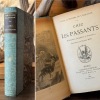
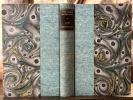

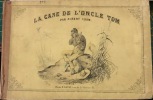
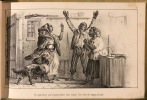
![Passe-Tems (180 planches en 2 Tomes : Complet) [ Passe-Temps ]. ADAM, Victor](https://static.livre-rare-book.com/pictures/CDL/64583_thumb.jpg)
![Passe-Tems (180 planches en 2 Tomes : Complet) [ Passe-Temps ]. ADAM, Victor](https://static.livre-rare-book.com/pictures/CDL/64583_2_thumb.jpg)
![Passe-Tems (180 planches en 2 Tomes : Complet) [ Passe-Temps ]. ADAM, Victor](https://static.livre-rare-book.com/pictures/CDL/64583_3_thumb.jpg)
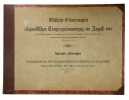
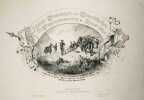
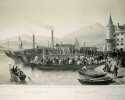


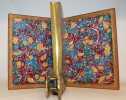
![Après l'Abandon de la Revanche [ Edition originale - Livre dédicacé par l'auteur ]. ADAM, Juliette](https://static.livre-rare-book.com/pictures/CDL/60503_thumb.jpg)
![Après l'Abandon de la Revanche [ Edition originale - Livre dédicacé par l'auteur ]. ADAM, Juliette](https://static.livre-rare-book.com/pictures/CDL/60503_2_thumb.jpg)
![Après l'Abandon de la Revanche [ Edition originale - Livre dédicacé par l'auteur ]. ADAM, Juliette](https://static.livre-rare-book.com/pictures/CDL/60503_3_thumb.jpg)



![En Undersökning av Folkens Välstånd dess Natur och Orsaker. Översättning av D:r Emil Sommarin. [i.e. Swedish ""Wealth of Nations""]. 2 volumes. - ...](https://static.livre-rare-book.com/pictures/LLX/58833_1_thumb.jpg)


![Oeuvres de Maitre Adam Billaut, menuisier de Nevers; [...] edition par N.-L. Pissot.Le titre complet de l’ouvrage est le suivant: Oeuvres de Maitre ...](https://static.livre-rare-book.com/pictures/BRK/22165_1_thumb.jpg)
![Oeuvres de Maitre Adam Billaut, menuisier de Nevers; [...] edition par N.-L. Pissot.Le titre complet de l’ouvrage est le suivant: Oeuvres de Maitre ...](https://static.livre-rare-book.com/pictures/BRK/22165_2_thumb.jpg)
